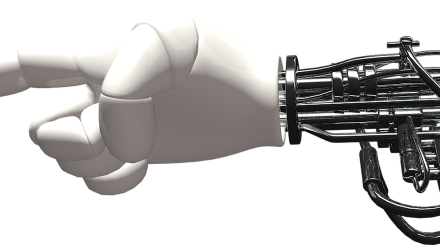That’s why we’ve created a series of eBooks to help you out. We’ve taken key business skills and applied them to robotics.
The result is a clear, straightforward process you can apply to your own business right away.
The eBooks are arranged into 10 modules (starting with Module 1). Together they guide you through the whole process of developing a robotics team, from assessing your business needs, to implementing your training program, to measuring the effectiveness of the program.
Module 9 is available to download right now. This module is a hands-on worksheet that shows how to monitor the effectiveness of your training program to ensure it continues to align with your business needs.
Design and Launch Your Training Program
If you haven’t already, you should definitely check out the first eight modules (starting with Module 1). They provide a step-by-step guide through the whole process of implementing a successful robotics training program. They discuss how to assess the robotics needs of your business, get the team on board, and build an effective training program.
Gather Feedback about Training Effectiveness
Module 9 guides you through the process of measuring a training program to ensure that it is effective and in alignment with your business goals.
The module uses Kirkpatrick’s Four-Level Training Evaluation model, which we briefly introduced in “In-House Robotics Expertise: How to Tell If It’s Working.”
Related: Even in a Down Market, Robotics Are Up
The worksheet shows you how to implement each of the four levels:
- Level 1: Gather Trainee Reactions—Feedback forms are a rough measure of training effectiveness. Although limited, they’re quick and easy to implement. The module provides a template you can use to construct your own feedback forms to measure trainees’ reactions.
- Level 2: Assess Learning Objectives—At this level, you compare what the trainees have learned with pre-defined learning outcomes. The activities at this level go along with the Individual Learning Plan, which was introduced in Module 7.
- Level 3: Monitor Behavioral Changes—The true test of training effectiveness is whether it succeeds in changing employees’ behavior. Did the training program turn knowledge into action? The module discusses a few options for objectively measuring this outcome.
- Level 4: Measure Results—Ultimately, a training program is only effective if it succeeds in improving your business. Based on the metrics you chose in Module 8, you will measure how training impacts your business on an operational level.
For more news related to robotics and artificial intelligence, make you sure you visit the Robotics & AI Channel.
